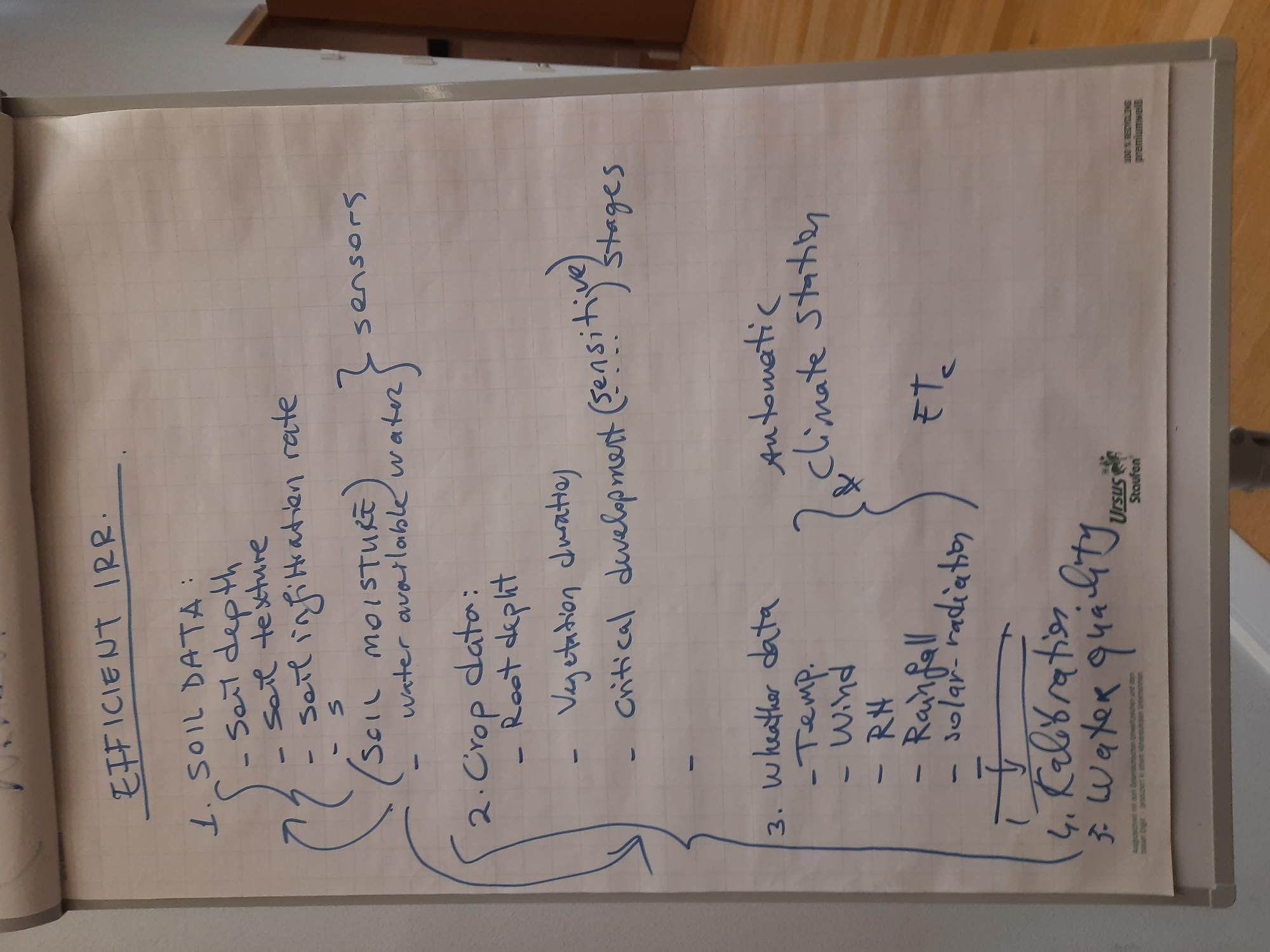AI Irrigation
Efficient Irrigation: Technologies and Techniques
Efficient irrigation focuses on minimizing water waste by using methods that deliver water directly to the plant roots, reduce evaporation, and avoid runoff. Some techniques include:
- Drip Irrigation: Water is delivered slowly and directly to the plant roots through tubes, emitters, and valves, which reduces evaporation and runoff.
- Micro-Sprinklers: These low-pressure sprinklers deliver water to specific areas, ensuring that water is only applied where needed.
- Subsurface Irrigation: Water is delivered underground, directly to the root zone, which can further reduce evaporation losses.
Both smart and efficient irrigation systems aim to deliver just the right amount of water at the right time, improving plant growth while conserving water.
Smart Irrigation Systems: Overview
Smart irrigation refers to the use of advanced technologies to optimize the amount and timing of water delivered to crops, landscapes, or gardens. These systems often rely on real-time data, sensors, and algorithms to automatically adjust irrigation based on environmental conditions, plant needs, and weather forecasts.
Key Components of Smart Irrigation:
- Soil Moisture Sensors: These sensors measure the moisture content in the soil, ensuring that plants are watered only when necessary, reducing over-irrigation.
- Weather Data Integration: Smart irrigation systems can access real-time weather data (rainfall, humidity, temperature) to adjust watering schedules automatically.
- Flow Meters: These track the amount of water used, ensuring there are no leaks and monitoring overall water consumption.
- Remote Control via Apps: Users can monitor and control irrigation systems through mobile apps, making it easy to manage irrigation from anywhere.
Implementing Smart and Efficient Irrigation
To implement these systems, the following steps can be followed:
- a) Survey and System Design
- Site Analysis: Assess the field or garden to understand soil type, plant species, topography, and existing water sources.
- Sensor Placement: Install soil moisture sensors, temperature sensors, and weather stations in strategic locations across the field.
- Irrigation System Setup: Based on the survey, install an efficient irrigation system (e.g., drip irrigation, micro-sprinklers) that can be integrated with smart controls.
- b) Integrating AI into Irrigation Systems
AI can significantly improve the efficiency and precision of irrigation systems by using machine learning algorithms to make real-time decisions based on data from multiple sources. Here’s how AI can be used:
Data Collection: AI systems gather data from:
-
- Soil moisture sensors: To track soil water content at different depths.
- Weather stations: For real-time weather forecasts (rain, wind, humidity, temperature).
- Remote Sensing (Drones or Satellites): For aerial imagery and crop health monitoring using multispectral cameras.
Historical Data: Past irrigation patterns, weather trends, and crop yield information.
AI-Powered Decision-Making:
-
- Predictive Analysis: AI can predict when and how much water is needed based on historical data, current soil moisture levels, crop type, and upcoming weather. This prevents over- or under-watering and maximizes water-use efficiency.
- Dynamic Scheduling: AI can automatically adjust irrigation schedules in real time. For instance, if rain is forecasted, the system can reduce or halt irrigation to save water.
- Anomaly Detection: AI can detect anomalies, such as leaks, pump failures, or irregular moisture levels, allowing for quick fixes and better maintenance.
Machine Learning for Crop Needs:
-
- Crop-Specific Optimization: AI can learn the unique water requirements of different crops at various growth stages and optimize irrigation based on these insights.
- Integration with Fertigation (Fertilization + Irrigation): AI systems can also control the precise application of fertilizers alongside water, optimizing the nutrients delivered to the plants, reducing waste, and improving yields.
IoT Integration:
-
- The smart irrigation system can be connected to the Internet of Things (IoT), allowing all devices (sensors, pumps, valves) to communicate and work together seamlessly.
- Real-Time Monitoring: Farmers or landscape managers can use mobile apps to monitor and control the irrigation system remotely. Alerts can be sent for issues like leaks, low soil moisture, or irregular sensor data.
- c) Continuous Learning and Improvement
AI can improve over time by continuously learning from new data. As it collects more information from sensors and the environment, it becomes better at predicting water requirements, refining irrigation schedules, and adapting to changing weather conditions.
Advantages of Using AI in Smart Irrigation
The integration of AI brings a number of benefits:
- Water Conservation: AI ensures precise irrigation, helping to conserve water and avoid wastage.
- Increased Crop Yields: AI-optimized irrigation provides the exact amount of water crops need at every growth stage, leading to healthier plants and increased yields.
- Cost Savings: By preventing over-irrigation, reducing fertilizer waste, and detecting leaks or other system inefficiencies, AI helps cut down costs for farmers.
- Adaptability to Climate Change: AI can adjust irrigation strategies in response to changing climate conditions, helping to cope with droughts or erratic weather patterns.
- Sustainability: Efficient water use through AI reduces the environmental footprint of agricultural operations, promoting sustainable farming practices.
Challenges and Considerations
While AI-powered smart irrigation offers many advantages, there are some challenges to consider:
- Initial Setup Costs: The cost of installing sensors, smart controllers, and AI systems can be high, although long-term savings often offset these costs.
- Data Dependency: The accuracy of AI depends on the quality of data collected. Poor sensor calibration, inadequate weather data, or system errors can lead to suboptimal decisions.
- Technical Skills: Farmers or landscapers may require training to operate and maintain these advanced systems effectively.
AI-Powered Decision-Making
-
- Predictive Analysis: AI can predict when and how much water is needed based on historical data, current soil moisture levels, crop type, and upcoming weather. This prevents over- or under-watering and maximizes water-use efficiency.
- Dynamic Scheduling: AI can automatically adjust irrigation schedules in real time. For instance, if rain is forecasted, the system can reduce or halt irrigation to save water.
- Anomaly Detection: AI can detect anomalies, such as leaks, pump failures, or irregular moisture levels, allowing for quick fixes and better maintenance.
Machine Learning for Crop Needs:
-
- Crop-Specific Optimization: AI can learn the unique water requirements of different crops at various growth stages and optimize irrigation based on these insights.
- Integration with Fertigation (Fertilization + Irrigation): AI systems can also control the precise application of fertilizers alongside water, optimizing the nutrients delivered to the plants, reducing waste, and improving yields.
IoT Integration:
-
- The smart irrigation system can be connected to the Internet of Things (IoT), allowing all devices (sensors, pumps, valves) to communicate and work together seamlessly.
- Real-Time Monitoring: Farmers or landscape managers can use mobile apps to monitor and control the irrigation system remotely. Alerts can be sent for issues like leaks, low soil moisture, or irregular sensor data.
- c) Continuous Learning and Improvement
AI can improve over time by continuously learning from new data. As it collects more information from sensors and the environment, it becomes better at predicting water requirements, refining irrigation schedules, and adapting to changing weather conditions.
Advantages of Using AI in Smart Irrigation
The integration of AI brings a number of benefits:
- Water Conservation: AI ensures precise irrigation, helping to conserve water and avoid wastage.
- Increased Crop Yields: AI-optimized irrigation provides the exact amount of water crops need at every growth stage, leading to healthier plants and increased yields.
- Cost Savings: By preventing over-irrigation, reducing fertilizer waste, and detecting leaks or other system inefficiencies, AI helps cut down costs for farmers.
- Adaptability to Climate Change: AI can adjust irrigation strategies in response to changing climate conditions, helping to cope with droughts or erratic weather patterns.
- Sustainability: Efficient water use through AI reduces the environmental footprint of agricultural operations, promoting sustainable farming practices.
Challenges and Considerations
While AI-powered smart irrigation offers many advantages, there are some challenges to consider:
- Initial Setup Costs: The cost of installing sensors, smart controllers, and AI systems can be high, although long-term savings often offset these costs.
- Data Dependency: The accuracy of AI depends on the quality of data collected. Poor sensor calibration, inadequate weather data, or system errors can lead to suboptimal decisions.
- Technical Skills: Farmers or landscapers may require training to operate and maintain these advanced systems effectively.
Real-World Applications
Many regions are already adopting AI-powered smart irrigation systems, particularly in areas where water scarcity is a significant challenge. For example:
- Israel’s Agri-Tech Industry: Israel is a leader in smart irrigation technology, using AI to optimize water use in agriculture. This technology has significantly increased water efficiency in a region with limited freshwater resources.
- California’s Agriculture: In drought-prone regions like California, AI systems help farmers manage limited water supplies more effectively while maintaining high crop yields.
Conclusion
AI-powered smart and efficient irrigation systems offer a promising solution to the global challenge of water scarcity in agriculture. By integrating advanced sensors, weather data, and machine learning, these systems can optimize water use, improve crop yields, reduce costs, and promote sustainability. As technology continues to evolve, AI-driven irrigation will play a vital role in ensuring food security while protecting valuable water resources.

